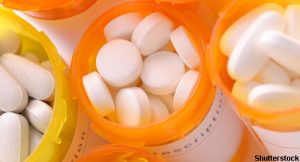 ACR CONVERGENCE 2021—Tigulixostat is an investigational, non-purine, selective xanthine oxidase inhibitor that lowers serum uric acid (sUA) levels in patients with gout and hyperuricemia. Findings from a phase 2 study were presented by Robert Terkeltaub, MD, professor of medicine and section chief of Rheumatology at the Veterans Administration and University of California, San Diego, at ACR Convergence 2021.1
ACR CONVERGENCE 2021—Tigulixostat is an investigational, non-purine, selective xanthine oxidase inhibitor that lowers serum uric acid (sUA) levels in patients with gout and hyperuricemia. Findings from a phase 2 study were presented by Robert Terkeltaub, MD, professor of medicine and section chief of Rheumatology at the Veterans Administration and University of California, San Diego, at ACR Convergence 2021.1
The researchers randomized 156 patients with gout and sUA levels of ≥8.0 mg/dL to ≤12.0 mg/dL to receive 50 mg of tigulixostat (n=34), 100 mg of tigulixostat (n=38), 200 mg of tigulixostat (n=37) or placebo (n=34) once daily for 12 weeks. Prior to treatment, the patients underwent a wash-out period during which they took 0.6 mg of colchicine once daily for gout flare prophylaxis. Colchicine was continued until the end of the study.
The study goal was to evaluate the efficacy and safety of tigulixostat in gout patients with hyperuricemia, as well as to find appropriate doses for further development. The primary end point was the proportion of patients who achieved an sUA level less than 5 mg/dL at week 12. The secondary end points included the proportion of patients who attained an sUA level less than 6 mg/dL at week 12 and gout flare data collected using an electronic diary. Safety was assessed throughout the study, including during a two-week, post-treatment follow-up visit.
The Results
At week 12, 2.9% of patients who received placebo achieved an sUA level of less than 5.0 mg/dL compared with 47% of patients who received 50 mg of tigulixostat, 45% who received 100 mg of tigulixostat and 62% who received 200 mg of tigulixostat. The findings were statistically significant for all tigulixostat doses compared with placebo (P<0.0001).
Also at week 12, the rates of patients who achieved an sUA level of less than 6 mg/dL were significantly higher for those who received tigilixostat than those who received placebo (P<0.0001, for all doses). The response levels of patients who received tigulixostat were 59% for 50 mg of tigulixostat, 63% for 100 mg of tigulixostat and 78% for 200 mg of tigulixostat compared with 3% for patients who received placebo.
The total percentage of gout flares were: 13% for patients who received both 50 mg and 100 mg of tigulixostat, 11% for patients who received 200 mg of tigulixostat and 9% for patients who received placebo. All patients who experienced a flare required rescue treatment.

